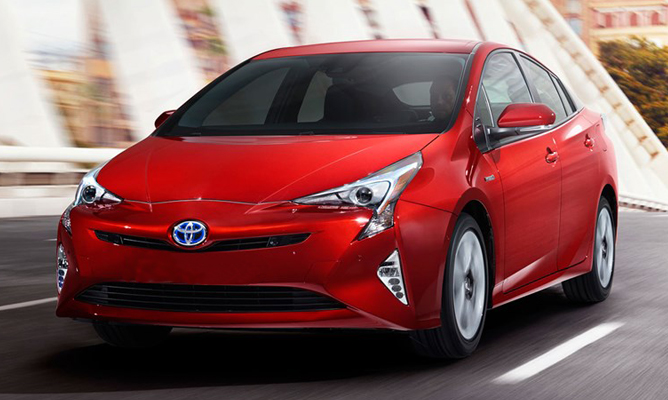
Cheap to run, Refined to drive
Toyota has discovered its shape with the fourth-era Prius. The producer has tended to a hefty portion of the issues that distressed the model’s forerunner, to the point where the Prius is presently our top pick “green” car. It’s seen off tough competiton from other eco models including the hybrid Kia Niro SUV and Hyundai Ioniq, and also the customarily fueled VW Passat BlueMotion.
Cross breeds need to convey noteworthy proficiency and the Toyota Prius have had 20 years of advancement to consummate the equation. It’s pricier than a few newcomers, yet it has a nice spec, in addition to its cabin is roomy and there’s a lot of boot space.
The most recent Prius additionally serves up tolerable execution, while the ride is likewise more refined than any time in recent memory. Four eras of advancement mean this is the most total hybrid yet.
Today, the Toyota Prius is seemingly the Japanese company’s most well-known car. While models, for example, the Corolla built up the firm, and the Supra and Celica models included some wearing allure, the Prius has set up itself as the world’s smash hit hybrid.
Prius Engines
As in the old model, the Prius’ hybrid framework highlights a 97bhp 1.8-litre VVT-i petrol engine. In any case, the unit has been re-designed to convey essentially better mileage – the Prius will return 94.1mpg on the consolidated cycle in specific adaptations. While that may appear to be enormously hopeful for true driving, mpg figures up in the 70s and mid 80s ought to be achievable. CO2 emanations are low as well – Toyota says 70g/km yet that relies on upon the extent of combination wheels fitted. The last generation also had Toyota 2.0 litre petrol engine in the line-up as well.
First Generation
When it touched base in 1997, the first Prius offered an exceptional proprietorship recommendation, as it was the main petrol-electric hybrid hatchback on special. Be that as it may, today, in case you’re not a car creator with a mixture in your line-up, you’re in no place.
With respect to different adversaries, the most direct rivals to the Prius are the Hyundai Ioniq and Kia Niro, which were launced in 2016. These both utilized a petrol-electric hybrid framework like the Prius, while the Peugeot 508 RXH estate has a diesel-electric mixture framework, and the Ford Mondeo hyrbid and Lexus IS 300h are bigger crossover saloons that expenses around the same as the Prius.
Somewhere else, there are various module hybrid models that rival the Prius, however they do cost more. The Volkswagen Golf GTE and Audi A3 e-tron utilize to a great extent a similar petrol-electric drive framework, in spite of the fact that on the off chance that you don’t connect them to energize the battery, then you’ll get economy that is poorer than a Prius’s.
In case you’re keen on a module hybrid, then the VW Passat GTE, BMW 330e and Volvo V60 Twin Engine merit considering, but at a higher cost, while the cars with the minimum discharges will be unadulterated electric vehicles, for example, the Nissan Leaf and BMW i3.
In the event that you do a lot of engineway miles, then you might need to consider a customary diesel hatchback, yet the Prius comes nearer to these for long-separate economy than any time in recent memory.
The Prius has a petrol-electric hybridframework that has been created more than 20 years. The current Mk4 Prius utilizes a 1.8-litre petrol engine, an electric engine and lithium-particle battery pack, while the car’s gadgets are intended to oversee vitality stream between the engine, battery and street.
Outflows begin from 70g/km, so charge expenses are low for business clients and private purchasers alike, and asserted economy of up to 94.2mpg. Toyota has additionally presented a module adaptation of the most recent Prius, which has asserted economy of 134.5mpg and emanations of 49g/km.
While the most recent Prius conveys the best economy yet, the Mk4 is likewise a great deal preferable to roll over its antecedents. It’s based on Toyota’s New Worldwide Design (TNGA), and the GA-C stage is set to be utilized on various new models, much like the VW Group’s MQB stage.
Great to Ride
One of the greatest advantages is that the new model is more dynamic, giving the Prius dexterity out and about that past models could just ever dream of. It’s went down with light guiding that gives more input and exactness than past Prius models, solid brakes and less body roll.
Try not to go thinking the new Prius has turned into a wearing saloon or hatchback like the BMW 3 Series or Volkswagen Golf GTE overnight, however. It’s still discernibly lingering behind those cars.
However, it is a boundless change on the spongy treatment of past Prius models. The Prius directs sweetly and rides with levelheadedness. A portion of this is because of the littler 15-inch wheels, yet the suspension set-up additionally feels gentler without trading off hold or element capacity.
The new Prius is additionally more refined to drive than before because of expanded sound protection, another CVT (constantly variable transmission) gearbox, that doesn’t request that the engine rev as much as some time recently, and the hybrid framework investing more energy running on noiseless electric power.
Around town the Prius frequently utilizes electric power alone to zoom around the avenues, yet head outside of the city, and the petrol engine kicks in. The move amongst electric and petrol power is close quiet with just the genuine clamor interruption into the lodge being from the super-eco tires.
Like the last model, the Prius has three unmistakable driving modes – “typical” gives an appropriate harmony between mileage and throttle responsiveness; “eco” streamlines the powertrain and aerating and cooling to spare fuel; while “Power” mode gives more increasing speed.
